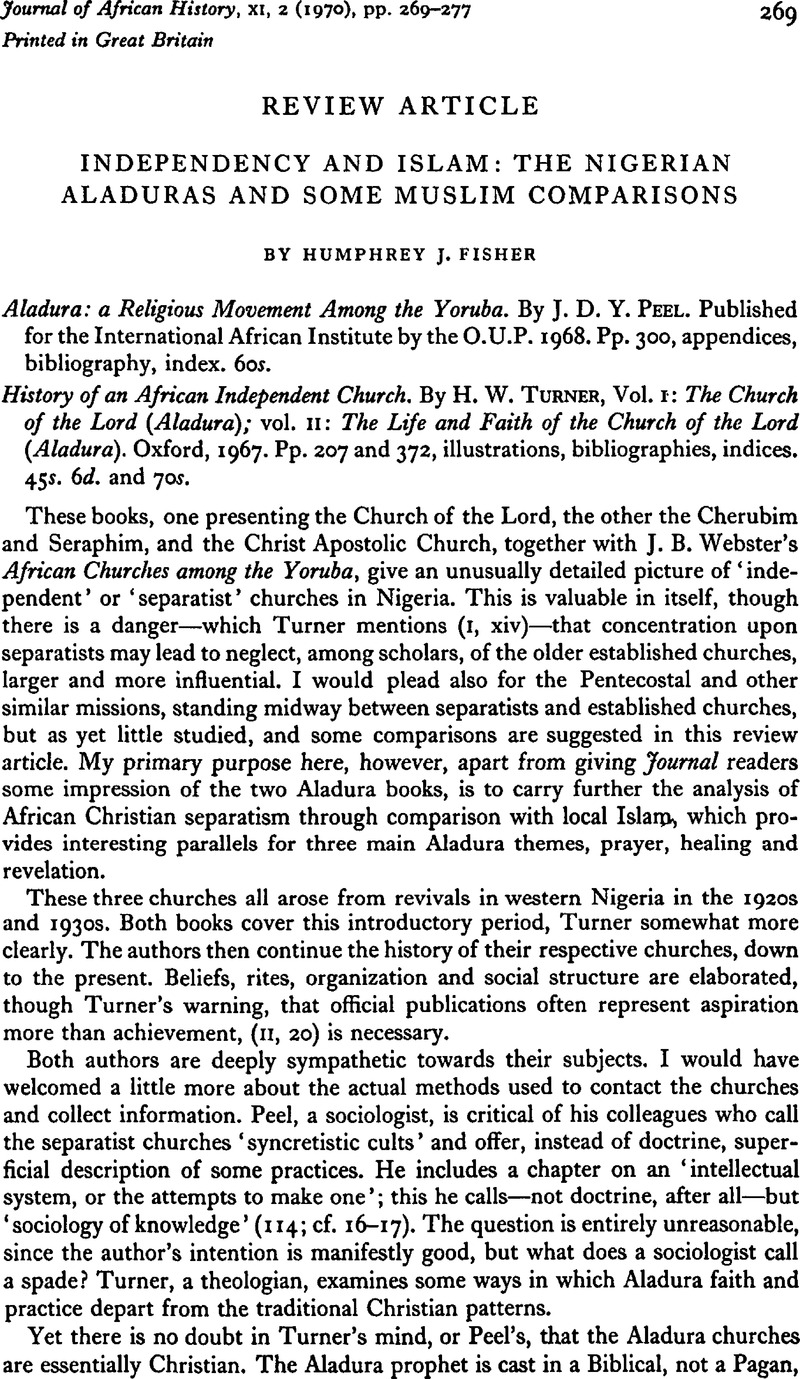Article contents
Independency and Islam: The Nigerian Aladuras and some Muslim Comparisons
Published online by Cambridge University Press: 22 January 2009
Abstract

- Type
- Review Articles
- Information
- Copyright
- Copyright © Cambridge University Press 1970
References
1 Ndanema, I. M., ‘The Martha Davies Confidential Benevolent Association’, Sierra Leone Bull, of Rel. III (1966), 2.Google Scholar
2 The script is considered by Dalby, D., ‘Further indigenous scripts of West Africa: Manding, Wolof and Fula alphabets and Yoruba “holy” writing’, African Language Studies, x (1969), 161–81.Google Scholar
3 Cahier no. 18, Fonds Gaden, Fouta Toro (Documents historiques), f. 1, at I.F.A.N., Dakar; Musa Kamara, Tarî al-Hājj ‘Umar, f. 96; I am indebted to J. R. Willis for these references.
4 Le Vine, R., Strangman, E. and Unterberger, L., Dreams and Deeds: Achievement motivation in Nigeria (1966).Google Scholar
5 Shihāb, al-Dīn, Futū al-Habasha, ed. and tr. R. Basset (1897), 13–14.Google Scholar
6 Person, Y., ‘La jeunesse de Samori’, Revue française dčhistoire dčoutre-mer (1962), 160.Google Scholar
7 Ba, A. J. and Daget, J., L&empire peul du Macina, 1 (1962), 25.Google Scholar
8 Holt, P. M., The Mahdist State in the Sudan 1881–1898 (1958), 4.Google Scholar
9 Nachtigal, G., Sahara und Sudan, III (Leipzig, 1889, reprinted 1967), 353.Google Scholar
10 Blyden, E. W., Christianity, Islam and the Negro race (reprinted 1967), 181–3.Google Scholar
11 For a comparison of Muslim and Christian groups along these lines, see the chapter ‘Separatism in West Africa’, in Kritzeck, J. and Lewis, W. H. (eds.), Islam in Africa (1969).Google Scholar
- 4
- Cited by


